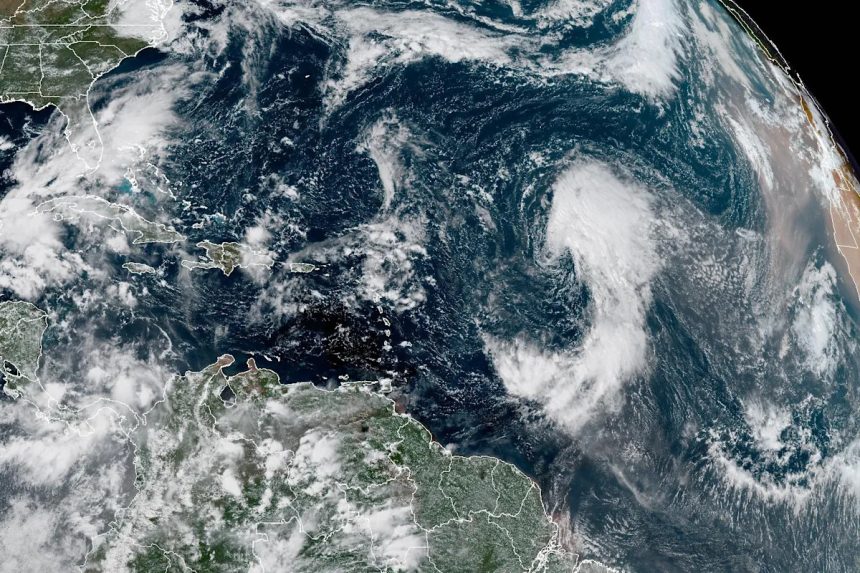Tropical Storm Gabrielle formed in the Atlantic Ocean on Wednesday — and it could intensify into a hurricane by this weekend, the National Weather Service said.
Tropical Storm Gabrielle is currently a “poorly defined” storm with maximum sustained winds of 45 mph. Conditions in the Atlantic will likely prevent it from becoming much stronger over the next two days, but it’s expected to gradually intensify as a “more conductive environment” sets in over the weekend, NWS said. Gabrielle is forecast to become a hurricane by Sunday morning.
Where is the storm now, and what is its path?
-
Gabrielle was located in the open ocean, far from any land mass.
-
The storm has maximum sustained winds of 45 mph.
-
It’s moving north by northwest at 22 mph.
-
Forecasts are “highly uncertain” at this point, NWS said, but the storm is currently expected to drift northwest on a path that would take it well clear of the islands in the Eastern Caribbean.
-
The islands of Bermuda, which sit nearly 600 miles off the East Coast of the United States, could be Gabrielle’s direct path by the time it becomes a hurricane, the agency warned.
-
Right now, there are no indications that Gabrielle might threaten the U.S. mainland.
National Weather Service
How strong will Gabrielle become?
It’s too early to know how powerful the storm will ultimately become at its peak strength. NWS forecasts that Gabrielle’s winds will exceed 75 mph, the threshold for being classified as a Category 1 hurricane, by Sunday morning. The agency has not yet made any predictions of how much, if at all, the storm might intensify after that point. It also emphasized that its confidence in the accuracy of its forecasts at this stage is low.
How is hurricane season shaping up?
Government forecasters anticipated an “above-normal” hurricane season this year, with between five and nine hurricanes.
Gabrielle is the seventh named storm of the season so far, which started in June and runs through the end of November. If it strengthens into a hurricane, it’ll become the second of the season. The first was Hurricane Erin, an incredibly powerful storm that reached Category 5 last month. Erin caused nine deaths in the island nation of Cape Verde off the western coast of Africa, but turned northward before reaching the U.S. mainland. Though it never made landfall, the storm caused significant flooding along the East Coast and created rough seas that caused at least two deaths along beaches in the Northeast.
Even an above-average hurricane season this year would be a relief compared to 2024, which featured multiple devastating hurricanes that struck the Gulf Coast. Hurricane Helene caused at least 250 deaths and led to catastrophic flooding throughout the southern U.S. when it struck in late September last year. Less than two weeks later, Hurricane Milton — one of the most intense Atlantic hurricanes ever — pummeled Florida.









